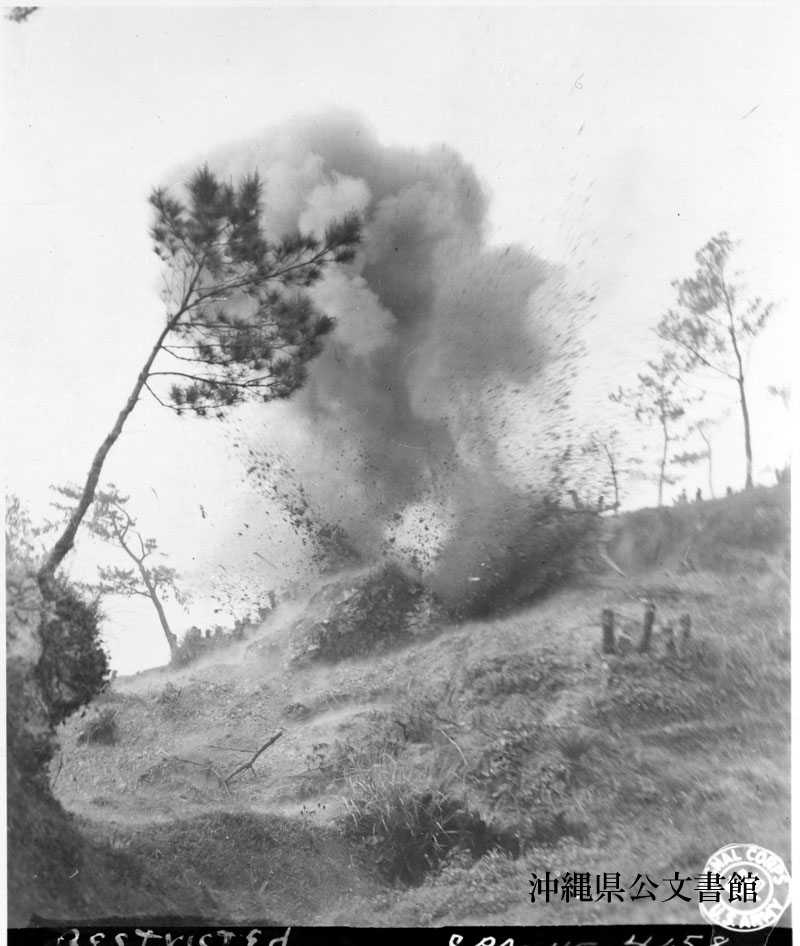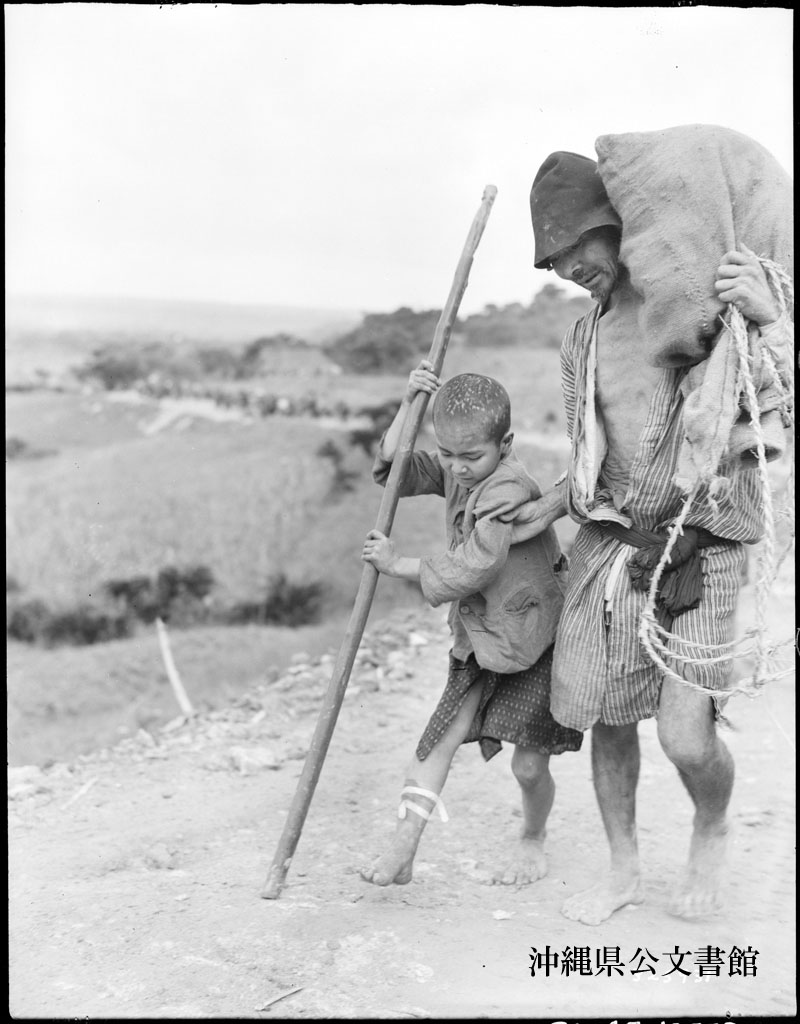For decades, historians have harbingered the passing of the generations who experienced and survived the Second World War and the inevitable, ultimate passing of individual living memory into either collective cultural memory or oblivion. In order to combat this threat of historical oblivion, those that lived through these events have recorded their memories to preserve them for future generations. One such event is the Battle of Okinawa: the final and bloodiest land battle between US-American Forces and the Imperial Japanese Army in the Asia-Pacific War (1937–1945). It also bears the distinction of the only land battle to be fought in an existing Japanese prefecture. Combat lasted about three months and claimed the lives of over 240,000 people, a majority of which were Okinawans. In the decades since the end of the war, hundreds of eyewitnesses have published their recollections of the battle, which serve as invaluable sources for historical research, sources that until now have remained largely untapped.
War memory in Japan as a topic of historical analysis is not new. In fact, memory discourse of the Asia-Pacific War in Japan and Asia is fiercely contested and remains a source of political tension in the region to this day. However, the Battle of Okinawa, despite its significance, has been comparatively overlooked. This doctoral project aims to address this historical lacuna, by conducting a discourse analysis of a wide range of written, first-hand accounts – from civilians and soldiers, from Okinawans and mainland Japanese – to uncover how the battle and the war at large was perceived by those that experienced it. It is my aim to reconceptualise Okinawan, Japanese, and global memories of the Asia-Pacific war by breaking down dyadic categorizations, identifying shared themes as well as conflicting narratives within them, and contextualising them in relation to one another and the time in which they were remembered.
Local and national memory of the Battle of Okinawa have frequently been at odds with one another. In broad terms, the Okinawan stance maintains that the island and its people were exploited by the Japanese military and needlessly sacrificed in the final days of a lost war, while the national(ist) stance oft-touted by the ruling party in Japan, frames this sacrifice as willingly offered up for the good of the Japanese nation. Highlighting the experiences and perceptions of those who witnessed the battle and have lived with both the mental and physical scars left in its wake can contribute to – and potentially complicate – these narratives that depict the Okinawan people either as powerless victims or passionate subjects. The central question of this project will explore how these individuals reflect on their mindset, actions, and agency at the time: How did they view themselves in relation to the Japanese emperor and the Japanese empire? What did they perceive to be their role in the battle and the war at large? Did they report any changes or developments in these views before, during, or after the battle?
Over 75 years have passed since the end of the war, meaning these accounts have been re-remembered and re-told in a variety of temporal contexts. However, these contexts are often neglected when engaging with memory. This is a significant oversight, as the themes that arise in these recollections are prone to shift as they are viewed in a changing Japan and a changing world. In identifying the themes that are discussed within these accounts, this project also seeks to recognize shifts in these themes as well as any discernible catalysts for these shifts.
This project has identified at least two events that likely resulted in a reframing of the Battle of Okinawa in the living memory of eyewitnesses: Okinawan reversion in 1972 and the death of Emperor Hirohito (Emperor Shōwa), the wartime emperor, in 1989. While Japanese sovereignty was restored in 1952, Okinawa remained under the control of the United States for another twenty years. In addition to censorship policies restricting the publication of certain topics related to the war, the most pressing political and social question of the time was Okinawan reversion itself. Once this issue had been resolved, different sociopolitical concerns could come to the fore, causing memories of the battle to be reconsidered within this new context.

The second event literally brought an end to an era. The Shōwa Period (1926–1989) had lasted over sixty years; for most Japanese citizens, this was their first time experiencing an imperial era change. This change brought with it a period of intense retrospection, with innumerable documentaries as well as written publications reflecting on and reviewing the past era, including many “personal Shōwa histories”. Previous research has shown that the death of the emperor not only signalled an increase in the number of such publications, but also a willingness to discuss previously taboo subjects.1
The idea of Japanese “amnesia” in relation to the Asia-Pacific War is the dominant narrative within international media. This image persists despite many scholars documenting that there is no such monolithic memory of war in Japan,2 and while the stance endorsed by the state is important, particularly in the field of international relations, it cannot be seen as a reflection of the collective memory of the general Japanese population. Indeed, there are multiple narratives competing and coexisting with each other, succinctly categorized by sociologist Akiko Hashimoto into hero, victim, and perpetrator narratives.
While these serve as a useful guide in navigating the fraught landscape of Japanese war memory, remembrance of the Battle of Okinawa does not easily fit into these categories. Rather, the Battle of Okinawa demonstrates that these categories cannot always be cleanly extricated from each other. This may be due, in part, to Okinawa’s unique status as simultaneously “Japanese” and “not Japanese”.3 Okinawan liminality is a result of its distinct historical background. Prior to its designation as a Japanese prefecture 1879, Okinawa had been the Ryūkyū Kingdom, an independent kingdom with close ties to both Japan and China. As a result, the people of Okinawa had (and continue to have) a distinct cultural and language tradition, and during the Asia-Pacific War, Okinawa had a semi-colonial status: officially a Japanese prefecture but viewed as other and often inferior by the mainland.
I have chosen to investigate the Battle of Okinawa precisely due to this liminal status. Just as individual memories can offer new perspectives on larger historical narratives, turning to domestic cultures of memory in Japan can lead to new perspectives on the international level. Studies of memory of the Asia-Pacific War, all but inevitably exacerbate the memory wars fought in and around Japan and its role in the war, leading to further entrenchment on the various sides of the conflict. By looking at an underexplored aspect of the war and using a novel approach of analysis, this project seeks to both contribute to the memory of the Battle of Okinawa and the Asia-Pacific War as well as challenge the memory wars connected to it.
This research project is being supervised by Prof. Dr. Hans Martin Krämer, Director of the Centre for East Asian Studies at Heidelberg University and is funded by the Stiftung Begabtenförderung Cusanuswerk.
Dieser Beitrag wurde redaktionell betreut durch Lisa Marie Freitag.
Zitierempfehlung: Alexandra Valdez, Remembering the Typhoon of Steel: Eyewitness Accounts of the Battle of Okinawa, in: Portal Militärgeschichte, 17. Juli 2023, DOI: https://doi.org/10.15500/akm.17.07.2023.
- 1. Petra Buchholz, Schreiben und Erinnern: über Selbstzeugnisse japanischer Kriegsteilnehmer, München 2003, S. 133, 373.
- 2. For more information on this subject, see Akiko Hashimoto, The Long Defeat. Cultural Trauma, Memory, and Identity in Japan, Oxford 2015; Philip A. Seaton, Japan’s Contested War Memories. The “Memory Rifts” in Historical Consciousness of World War II, Routledge 2007; Franziska Seraphim, War Memory and Social Politics in Japan, 1945–2005, Cambridge 2008.
- 3. Tomiyama, Ichiro, “Spy”. Mobilization and Identity in Wartime Okinawa, in: Senri Ethnological Studies 51 (2000), S. 121–132.

